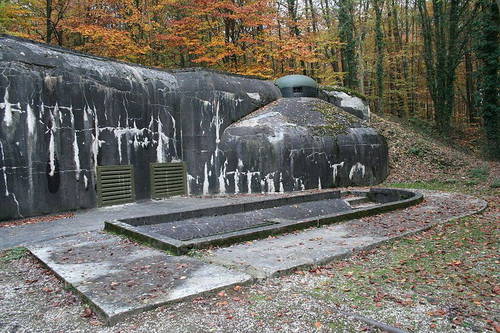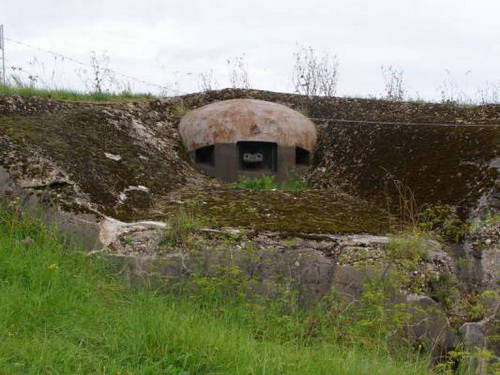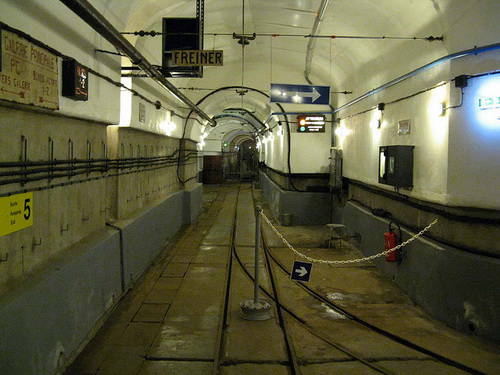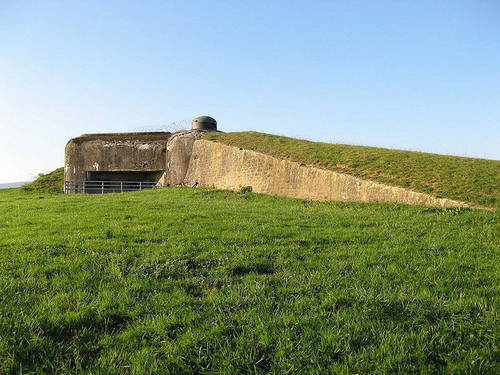“Unattachable defense lines of the 20th century”, Maginot Line (part 1)
French Defense Plan
French generals believed that the Germans would act just like in the 1914 campaign of the year. They will try to make a breakthrough from the north-east through the territory of Belgium. The plan of the French defense provided for a reflection of the German offensive on the River Dil, with passive defense on the fortifications of the Maginot Line. Construction of this line began in 1928, and by 1936, the main construction work was completed. Responsible for the construction of an “insurmountable line” of defense was the French Minister of War Andre Maginot, after whom the system of fortifications was named.
In the eastern part of France, the richest provinces were located in which 10-30-s of the last century produced about 40% of steel and steel products, mined 60% of zinc and 76,5% copper. With any development of the war, the army had to do everything possible to prevent the Germans from entering these important economic areas. Primarily from the north and north-east.

In military science, 2 distinguishes the main types of defense - tough (positional) and maneuverable. With positional defense, the troops stubbornly defend the chosen line and try not to let the enemy over the front line. At the same time, maneuverable defense is based on the fact that positions are not held tightly and can be surrendered, when the enemy depletes its reserves and offensive capabilities, the defenders are trying to regain their lost position with counterstrikes. Maneuverable defense completely admits the temporary loss of individual territories.
This type of defense is especially loved by the military, and in most cases can not tolerate government officials and politicians. The military loves him for the fact that this method does not make the defending troops passive, does not allow the advancing enemy to impose his will, allows him to seize the initiative at the right moment and go on the offensive. While positional defense puts defenders in a deliberately losing position, because the enemy will sooner or later find a gap in the defense, which will be fraught with the environment of the entire defending group.
Politicians, on the other hand, maneuverable defense makes them nervous, it is very difficult for them to explain to the population of a country the loss of a territory, its abandonment under the authority of the occupiers and the human and material losses associated with it. The population of the country often sees it as an unfortunate course of war. Morale, as well as the credibility of politicians falls, which may be fraught with defeat.

The task of the French army in the war was to prevent the Germans in the richest industrial areas of France, which would put the country in a difficult position and deprived the army of the possibility of replenishing resources. Paris saw a way out of building up an impenetrable defense along the German border, which required the construction of powerful fortifications capable of withstanding shelling of large-caliber artillery and holding back attacks from large masses of infantry for a long time.
The French were well aware that the Wehrmacht would try to break into France through Belgium, as in the First World War, and the Maginot line simply will not allow them to strike elsewhere. In Paris, it was believed that by holding most of the northern and north-eastern border, they would not let the Germans into the industrial areas of the country, imposing field battles on the north of France to the Germans with the transfer of battles to Belgium. At the same time, the French generals believed that at any moment they would be able to inflict a counterstrike on the enemy from behind the Maginot line in the direction of the north, cutting off the entire German army and intercepting all its supply lines.
Line Maginot
For the construction of the Maginot Line, the French spent a very impressive amount at that time - about 3 billion francs or 1 billion dollars. The total number of troops stationed on the line reached 300 000 people. The underground multi-level forts housed personnel facilities, powerful ventilation systems, power stations, narrow-gauge roads, rest rooms, hospitals, and telephone exchanges that were inaccessible to bombs and shells. In the upper ground floors were located gun and machine gun casemates, equipped with elevators for the supply of ammunition.
The forts were concrete “boxes” dug deep into the ground, the walls of which reached 3-4 meters. Upstairs were usually located only armored turrets. Before the first line of defense, if possible, anti-tank ditches were dug and anti-tank hedgehogs barred. Behind the first line of defense there was a whole network of reference points — concrete pads intended for the deployment of infantry, artillery, searchlights. Ammunition and equipment depots were located at a depth of up to 50 meters. In the depth of the defense ranged long-range artillery positions on the railway course. Still further was the old, modernized defensive line, which included the forts Belfort, Verdun, Epinal, and a number of others. The depth of the Maginot line at some sites reached 90-100 km., The French generals considered it impregnable.

The floor device of the forts looked like this. On the surface there were only concreted machine gun nests and artillery blockhouses, anti-tank pits and barriers. Below, a number of floors of the fort went underground, the connection between which was carried out by stairs and elevators, the maximum depth of the fortifications could reach 100 meters. On the first two floors of the fort were located rooms for the garrison. Here, a number of diesel engines were installed, which set in motion ventilation systems that supply air to all the premises of the fort, as well as dynamos that ensured the production of electricity. Similar engines were located on other floors, acting as insurers in case of failure of any of them.
On the third floor of the fort were placed ammunition for the current ammunition and supplies of water and food. On the fourth floor there was a telephone station and the office of the fort.
On the fifth floor there were stocks of medicines and hospital premises, a tunnel of electrified underground narrow-gauge railway passed below on the sixth level, through which rapid transfer of ammunition and troops to the right direction was carried out. The main road of this underground metro was double track, auxiliary access roads were single track.

At the level of the seventh floor was the headquarters of the fort, even lower were the reserve ammunition depots and reserve diesel engines. To a sufficiently large depth, the fort was defended by solid concrete walls, which eliminated the possibility of penetration into or undermining the fort using a tunnel.
The Maginot Line was a miracle of the fortification of its time - 5600 long-term defensive fortifications, 70 bunkers, 500 artillery and infantry units, around 500 casemates, dugouts and observation points. The length of the line is about 400 km. The average density was at the level of 7,7 facilities at 1 km. front (in some areas this number reached 14), nowhere between the pillboxes there were no gaps exceeding 8 km in length. Part of the pillboxes was equipped with artillery and machine-gun armor caps, which could rise to fire and then sink below the ground, avoiding the enemy’s return fire. Part of the fortifications was equipped with special dams, which provided for the flooding of vast areas and underground structures in case of their capture by the enemy. When building the line, many advanced military engineering solutions of that time were involved.
Frustration
Many historians believe that the Maginot line has not fully justified itself, which is only partly true. The line fulfilled its main meaning - it severely limited the scale of attacks on those areas that were protected by it. The tragedy was something else; the numerous miscalculations of the French command and leadership of the country nullified all the advantages that this most powerful defensive line in the world offered them.
The main and most tragic mistake of the French generals was that they could not predict the new tactics that the Wehrmacht had imposed on them. The Germans made their trump card swift strikes of large mechanized formations, the main striking force of which was Tanks. The field defense of the French army and the English expeditionary force simply could not withstand the onslaught of mechanized formations. Contrary to the plans of the French command, they did not succeed in imposing positional battles on the Germans either in Belgium or in the north of France, passing the German units to the rear of the Maginot line.

Sources used:
www.popmech.ru/article/5840-liniya-mazhino/
www.rusproject.org/pages/history/history_10/secret_maginot.php
www.azbukivedi-istoria.ru/publ/politika/podzemnye_forty_linii_mazhino/2-1-0-105
materials of the free online encyclopedia "Wikipedia"
Information